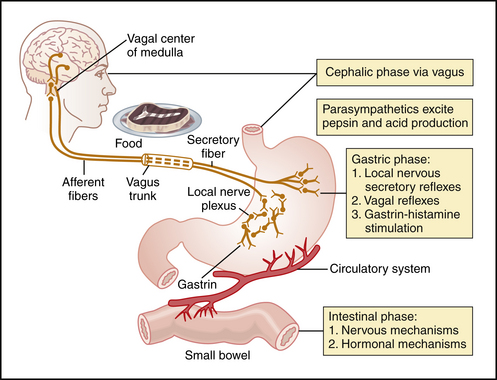54 CASE 54
PATHOPHYSIOLOGY OF KEY SYMPTOMS
Food ingestion increases acid production by the parietal cells of the gastric mucosa. There are three separate mechanisms stimulating acid secretion: the cephalic phase mediated by the central nervous system and the vagus nerve, a gastric phase caused by the presence of food within the stomach, and an intestinal phase caused by the entry of moderately acidic chyme into the duodenum (Fig. 54-1). Acid secretion is enhanced by acetylcholine, gastrin, and histamine; and acid secretion is inhibited by somatostatin. The high rate of acid secretion results in gastric contents being much more acidic than the ingested food that originally passed through the esophagus.
< div class='tao-gold-member'>
Only gold members can continue reading. Log In or Register to continue
Stay updated, free articles. Join our Telegram channel

Full access? Get Clinical Tree



